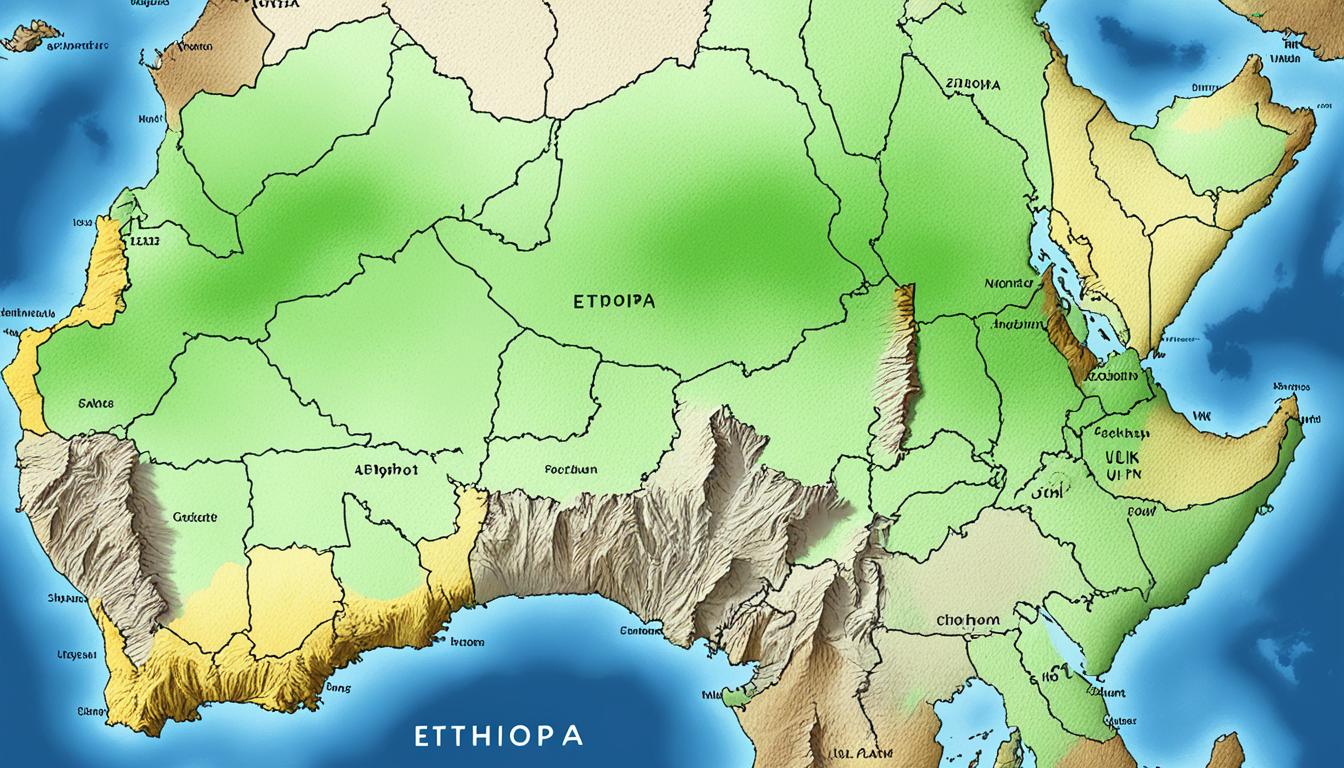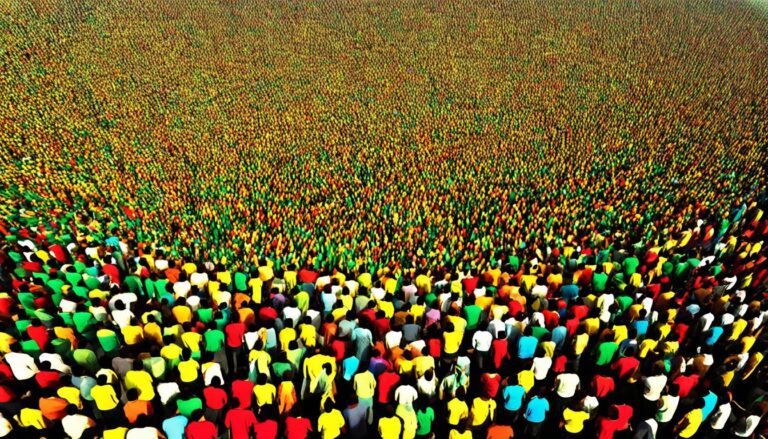How Big Is Ethiopia Compared to the UK?
Did you know that Ethiopia is more than four times larger than the United Kingdom in terms of land area? With Ethiopia covering approximately 1,104,300 square kilometers and the UK spanning about 243,610 square kilometers, the size difference between these two countries is quite significant. This geographical comparison showcases the vastness and diversity of our world, highlighting the unique characteristics of each nation.
Key Takeaways:
- Ethiopia is 353% larger than the United Kingdom in terms of land area.
- The total land area of Ethiopia is approximately 1,104,300 square kilometers.
- The United Kingdom has a land area of about 243,610 square kilometers.
- Ethiopia’s size is comparable to the combined size of France and Spain.
- Understanding the size difference between Ethiopia and the UK highlights the vastness and diversity of our world.
Understanding the Size of Ethiopia
Ethiopia, with its vast land area of 1,104,300 square kilometers, is larger than you might imagine. In fact, its size is roughly equivalent to that of France and Spain combined.
When it comes to geographical dimensions, Ethiopia offers a diverse landscape. In the north, you’ll find the majestic Abyssinian highlands, with some mountains soaring above 4,000 meters. These peaks offer breathtaking views and challenging terrain for adventurers and hikers alike.
The central plateau of Ethiopia sits between 2,000 and 3,000 meters above sea level, providing a unique environment for agriculture and settlement. It’s here that you’ll encounter stunning scenery and witness the resilience of the Ethiopian people.
The central plateau of Ethiopia ranges between 2,000 and 3,000 meters and is surrounded by the Rift Valley Lakes in the south.
If you venture further south, you’ll encounter the Rift Valley Lakes, a collection of beautiful bodies of water formed by the geological movement of the Earth’s crust. These lakes not only offer stunning natural beauty but also serve as important habitats for a diverse array of plant and animal species.
When comparing the size of Ethiopia to the United Kingdom, it becomes clear that Ethiopia is more than three times larger. Its vast land area provides a canvas for exploration and discovery, highlighting the rich natural wonders and cultural diversity that make Ethiopia truly unique.
Exploring the Geography of the UK
The United Kingdom, consisting of England, Scotland, Wales, and Northern Ireland, spans a land area of approximately 243,610 square kilometers. While it may not compare in size to Ethiopia, the UK still offers a diverse range of geographical features that are worth exploring.
The Highlands of Scotland
Scotland, located in the northern part of the UK, is known for its stunning highland landscapes. The Scottish Highlands are a mountainous region with peaks reaching heights of over 1,000 meters. The rugged terrain, including famous mountain ranges like the Cairngorms and the Grampians, offers breathtaking views and opportunities for outdoor activities such as hiking and mountaineering.
The Rolling Countryside
In contrast to the rugged Highlands, the UK is also characterized by its beautiful rolling countryside. The English countryside, in particular, is renowned for its picturesque landscapes, dotted with quaint villages, patchwork fields, and charming country estates. Areas such as the Cotswolds and the Yorkshire Dales attract visitors from around the world with their tranquil beauty and traditional English charm.
The Coastal Regions
With its extensive coastline, the UK offers a wealth of scenic coastal regions. From the dramatic cliffs of the Jurassic Coast in southern England to the stunning beaches of Cornwall and the wild beauty of the Scottish islands, there are endless opportunities for seaside exploration. The coastal areas also boast a rich diversity of wildlife, including seabird colonies and marine mammals.
“The UK’s geography is as diverse as its cultural heritage. From the breathtaking Highlands to the rolling countryside and picturesque coastlines, there is something for everyone to enjoy.”
| Geographical Features | Description |
|---|---|
| Scottish Highlands | A mountainous region with peaks reaching over 1,000 meters. |
| Rolling Countryside | Picturesque landscapes with patchwork fields and charming villages. |
| Coastal Regions | A diverse coastline with dramatic cliffs, sandy beaches, and wildlife habitats. |
Population Comparison: Ethiopia vs UK
When comparing the population of Ethiopia and the United Kingdom, it is evident that there is a significant difference in both size and density. Ethiopia, the second-most populous country in Africa after Nigeria, has a population of approximately 110.14 million people. However, despite its large population, the majority of Ethiopians live in rural areas, with about 85% residing outside of urban centers.
In contrast, the United Kingdom has a population of around 67.8 million people, making it considerably smaller in terms of population size. However, the population density in the UK is higher compared to Ethiopia due to its smaller land area. Let’s take a closer look at the population comparison between the two countries:
| Country | Population | Population Density |
|---|---|---|
| Ethiopia | 110.14 million | 109 people per square kilometer |
| United Kingdom | 67.8 million | 277 people per square kilometer |
As we can see from the table, while Ethiopia has a larger population, its population density is significantly lower compared to the more densely populated United Kingdom. This disparity can be attributed to the difference in land area, with Ethiopia’s vast size spreading out its population over a larger space.
Ethiopia’s Cultural Diversity
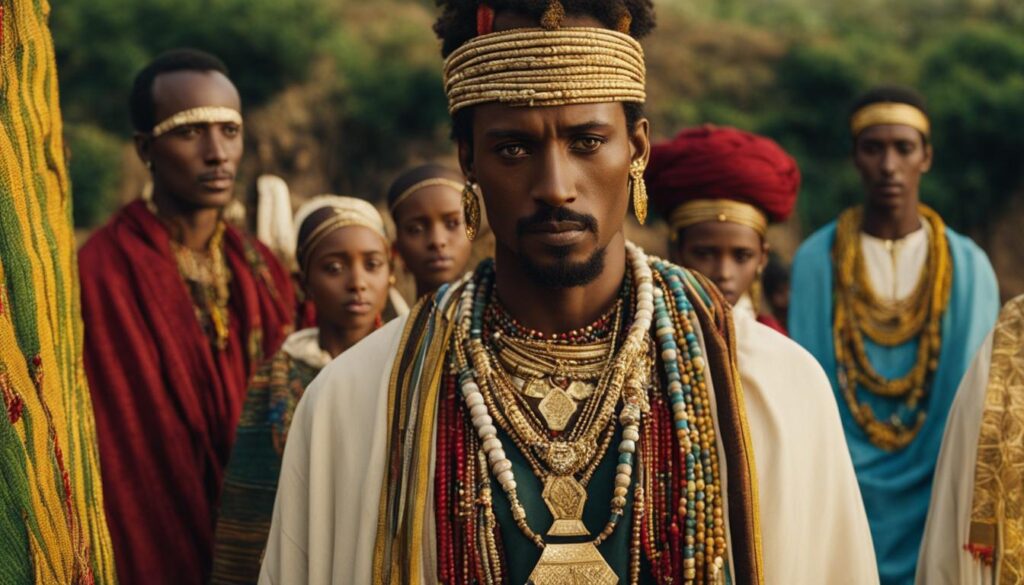
Ethiopia is a country known for its vibrant cultural diversity. With over 80 languages and 200 dialects spoken throughout the country, the ethnic composition of Ethiopia reflects a beautiful tapestry of different traditions and customs.
The People of Ethiopia
The population of Ethiopia is composed of various ethnic groups, each with its unique heritage and contributions to the country’s cultural mosaic. The Amhara and Oromo ethnic groups make up the majority of the population and play a significant role in shaping Ethiopian society.
| Ethnic Group | Population |
|---|---|
| Amhara | Approximately 28.7 million |
| Oromo | Approximately 35 million |
| Tigray | Approximately 7 million |
| Sidama | Approximately 4 million |
| Gurage | Approximately 3 million |
In addition to these major ethnic groups, Ethiopia is also home to numerous other ethnic communities, including the Somali, Afar, and Amhara. This rich diversity is a testament to the multicultural heritage that thrives within the country.
Ancient Traditions and Cultural Fusion
The cultural heritage of Ethiopia reflects a fascinating blend of influences from the Middle East and Africa. This fusion has shaped the country’s traditions, music, dance, art, and cuisine, making Ethiopia a captivating melting pot of ancient cultures.
“Ethiopia’s cultural diversity is a treasure trove of ancient traditions and customs. From the ancient Orthodox Christian rituals of the Ethiopian Highlands to the vibrant music and dance of the Oromo people, there is something unique and enchanting about the cultural tapestry of this diverse nation.” – Ethiopian cultural expert
The languages spoken in Ethiopia are a testament to its diverse cultural heritage. Amharic serves as the official language of the country, but numerous regional languages, such as Oromigna and Tigrigna, are also widely spoken.
The History of Ethiopia
Ethiopia holds a significant place in history as the oldest independent country in Africa and one of the oldest in the world. Its roots can be traced back several million years through remarkable archaeological discoveries that provide glimpses into the ancient civilizations that thrived in this land.
The historical significance of Ethiopia can be found in the rich tapestry of its past. The Bible mentions Ethiopia, with notable references to the legendary Queen of Sheba and her encounter with King Solomon. These ancient accounts highlight the country’s deep connection to religious and cultural narratives that have shaped the region for centuries.
“Ethiopia is the oldest settlement on earth and is the origin of the human race, for it is from there that Homo sapiens evolved and then migrated to the rest of the world.”
Ethiopia’s history is defined by the rise and fall of legendary empires such as Aksum, which flourished as a major trading power in the ancient world. The Aksumite civilization left an indelible mark on the region, characterized by impressive stone monuments, magnificent palaces, and a unique writing system known as Ge’ez.
Throughout its history, Ethiopia has faced numerous challenges, including resistance against colonization and foreign invasions. The country’s steadfast resistance against Italian aggression during the colonial era stands as a testament to its tenacity and determination to maintain its independence and preserve its heritage.
Today, Ethiopia serves as a treasure trove of ancient artifacts, archaeological sites, and heritage that continue to fascinate researchers, historians, and travelers alike. Its historical legacy is a source of pride for the Ethiopian people, fueling a sense of national identity deeply rooted in the country’s past.
Ancient Ethiopian Artifacts at the National Museum of Ethiopia
| Artifact | Description |
|---|---|
| Axum Obelisks | These towering granite obelisks, some reaching up to 78 feet in height, mark the archaeological site of Axum and are symbols of the ancient kingdom’s power and prosperity. |
| King Ezana’s Stone | Carved in the 4th century AD, this stone inscription commemorates King Ezana’s conversion to Christianity, marking a significant turning point in Ethiopian history. |
| The Aksumite Gold Crown | This intricately crafted gold crown, adorned with precious stones and intricate designs, is a stunning example of Aksumite craftsmanship and royal regalia. |
| The Lalibela Rock-Hewn Churches | These remarkable churches, carved entirely from solid rock in the 12th century, are a testament to the extraordinary architectural and engineering skills of the time. |
Ethiopia’s historical heritage is a source of inspiration, fostering a deep appreciation for the country’s diverse culture and traditions. It serves as a bridge between the past and the present, connecting generations and reminding us of our shared human history.
Ethiopia’s Strategic Location
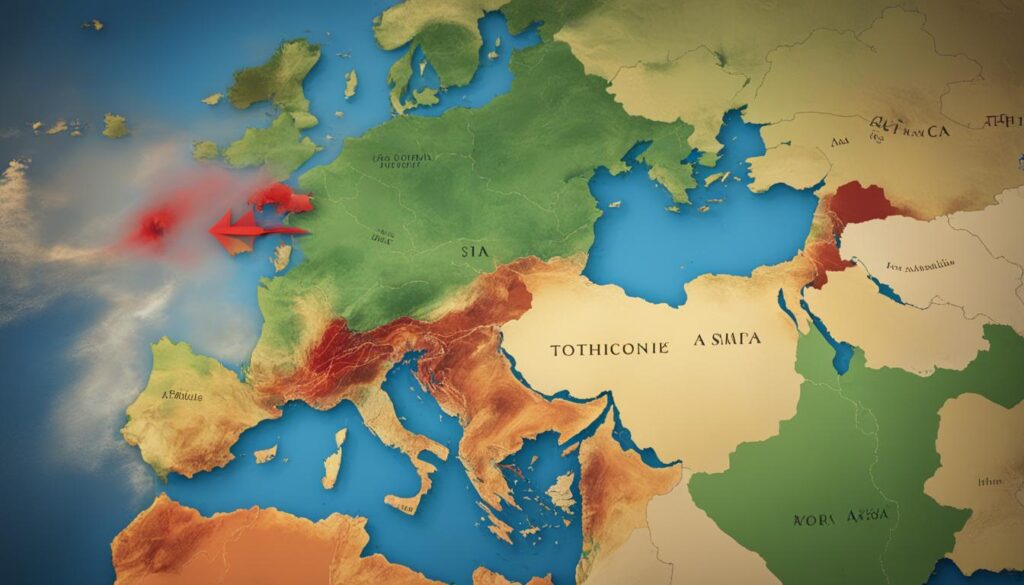
Ethiopia occupies a strategic position within the Horn of Africa, making it a crucial player in regional and international trade. Its geographical location, proximity to the Middle East and Europe, and access to major ports contribute to its significance as a trade hub.
With the Red Sea to its northeast and the Indian Ocean to its southeast, Ethiopia provides a direct link between these two vital bodies of water. This strategic position allows for efficient trade routes, facilitating the movement of goods and services between Africa, the Middle East, and Europe.
Bordering Sudan, Djibouti, Eritrea, Somalia, and Kenya, Ethiopia acts as a gateway, connecting different regions and fostering economic relationships. Its proximity to these countries enables the development of cross-border trade, bolstering regional cooperation and integration.
Furthermore, Ethiopia’s location along the Great Rift Valley, a geological feature stretching from the Red Sea to Mozambique, enhances its accessibility and connectivity. This natural corridor provides a direct route for transportation and trade, attracting investment and economic opportunities.
“Ethiopia’s strategic location at the crossroads of Africa, the Middle East, and Europe positions it as an important trade partner for nations seeking to tap into its diverse markets and resources.”
– [Company Name], Trade Analyst
Landmarks and Natural Features of Ethiopia
Ethiopia is a country blessed with an abundance of breathtaking landmarks and natural wonders. From ancient cities steeped in history to awe-inspiring natural formations, Ethiopia offers a diverse range of attractions for visitors to explore and appreciate.
Ancient City of Axum
One of the most renowned landmarks in Ethiopia is the ancient city of Axum. This historical site holds significant cultural and religious importance, as it is believed to be the capital of the ancient Aksumite Empire. Axum is known for its connection to the Queen of Sheba and the legendary Ark of the Covenant. Visitors can explore the ruins of ancient palaces, churches, and monolithic obelisks, which stand as a testament to the city’s glorious past.
Abyssinian Highlands
The topography of Ethiopia is characterized by the majestic Abyssinian Highlands. These highlands are part of the Ethiopian Plateau and are home to some of the country’s highest peaks, including Mount Ras Dashen, which rises to an impressive height of 4,550 meters. The lush green mountains and valleys offer breathtaking landscapes that are ideal for trekking and hiking enthusiasts.
Rift Valley Lakes
The Rift Valley Lakes form a unique natural feature of Ethiopia, stretching across the country’s southern region. These lakes are a series of interconnected freshwater bodies, each with its own distinct beauty and ecological significance. Lake Tana, the largest lake in Ethiopia, is a popular destination for boat tours and birdwatching. Lake Abijatta-Shalla, known for its abundance of bird species, attracts nature lovers and photographers alike. The Rift Valley Lakes provide a serene and tranquil setting for relaxation and appreciating Ethiopia’s natural beauty.
| Landmark/Natural Feature | Description |
|---|---|
| Ancient City of Axum | The ancient city with historical and religious significance, including the connection to the Queen of Sheba and the Ark of the Covenant. |
| Abyssinian Highlands | The majestic highlands with towering peaks, lush green landscapes, and excellent hiking opportunities. |
| Rift Valley Lakes | A series of interconnected lakes with diverse ecosystems, perfect for birdwatching, boating, and relaxation. |
The Language Diversity of Ethiopia
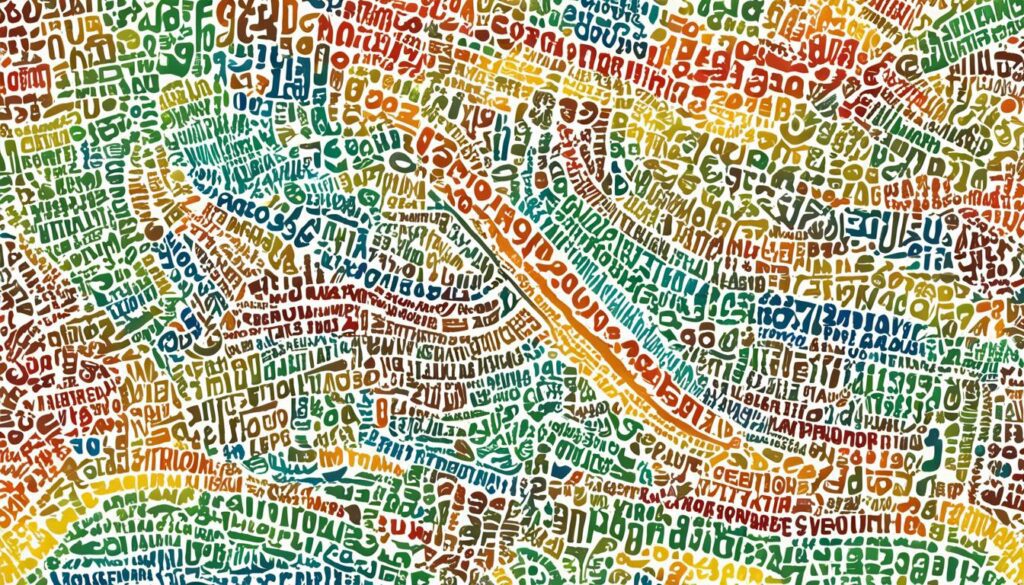
Ethiopia is a country renowned for its rich linguistic heritage and impressive language diversity. With more than 80 languages and over 200 dialects spoken across the nation, Ethiopia stands as a vibrant tapestry of communication and cultural expression.
At the forefront of Ethiopia’s linguistic landscape is Amharic, the official language of the country. Amharic holds great importance as the language of government, education, and media, fostering a sense of unity among the diverse Ethiopian population.
However, alongside Amharic, there are several other languages that hold significant influence and are widely spoken across different regions of Ethiopia. Among them are Oromigna and Tigrigna.
Oromigna, also known as Oromo, is spoken by the Oromo people, Ethiopia’s largest ethnic group. It is spoken by millions of individuals and plays a vital role in preserving the cultural identity of the Oromo community.
Tigrigna, on the other hand, is primarily spoken in the Tigray region of Ethiopia and by the Tigray people. It holds historical significance as an ancient Semitic language and showcases the linguistic diversity within Ethiopia.
The Ethiopian government recognizes the importance of preserving linguistic heritage and encourages the teaching of local languages in schools. By doing so, Ethiopia aims to uphold cultural diversity and ensure the continuation of distinct language traditions.
With its multitude of languages and dialects, Ethiopia offers a unique window into the richness and complexity of human communication. This linguistic diversity is not only a testament to the uniqueness of Ethiopian culture but also a source of pride and identity for the Ethiopian people.
Language Diversity in Ethiopia: Key Languages
| Language | Primary Speakers | Region |
|---|---|---|
| Amharic | Amhara and others | Various regions across Ethiopia |
| Oromigna (Oromo) | Oromo people | Oromia Region |
| Tigrigna | Tigray people | Tigray Region |
The table above provides a snapshot of the key languages spoken in Ethiopia, highlighting the primary speakers and corresponding regions. While Amharic serves as the official language, Oromigna and Tigrigna play vital roles in ethnic identity and cultural preservation.
As Ethiopia continues to evolve and embrace its diverse cultural mosaic, its linguistic heritage remains a powerful reflection of the country’s beauty and vibrancy.
Political and Administrative Structure of Ethiopia
Ethiopia operates under a federal democratic republic system comprised of nine National Regional States (NRS) and two administrative councils. These regional states play a crucial role in the political and administrative governance of the country, ensuring a decentralized system that addresses the diverse needs and interests of its population.
The regional states of Ethiopia are:
- Tigray
- Afar
- Amhara
- Oromia
- Somali
- Benishangul-Gumuz
- Southern Nations, Nationalities and Peoples Region (SNNPR)
- Gambella
- Harari
These regional states are further divided into zones and woredas, creating a multi-level administrative structure that ensures local governance and decision-making.
Let’s take a closer look at the political and administrative structure of Ethiopia:
The Nine National Regional States of Ethiopia
| Regional State | Capital City | Population |
|---|---|---|
| Tigray | Mekelle | 5,467,001 |
| Afar | Semera | 1,860,293 |
| Amhara | Bahir Dar | 21,134,988 |
| Oromia | Addis Ababa | 34,968,013 |
| Somali | Jijiga | 11,174,535 |
| Benishangul-Gumuz | Assosa | 1,432,011 |
| SNNPR | Hawassa | 20,777,872 |
| Gambella | Gambella | 431,986 |
| Harari | Harar | 274,908 |
This image represents the political and administrative structure of Ethiopia, showcasing the interplay between the national regional states and the federal government.
Recent Political Changes in Ethiopia
In recent years, Ethiopia has witnessed significant political transformations that have reshaped the country’s leadership and paved the way for a more inclusive and democratic government.
One of the prominent events in Ethiopia’s political history was the resignation of Prime Minister Hailemariam Desalegn. This decision, prompted by popular uprisings, marked a turning point in the country’s leadership. It demonstrated the power of the people to demand change and highlighted their desire for a more representative and accountable government.
To fill the vacant position, Mulatu Teshome was elected as the new President of Ethiopia. This change in leadership symbolized the nation’s commitment to progress and development in the face of political challenges.
The political landscape in Ethiopia is undergoing a transformation, with new reforms being initiated to ensure inclusivity and democratic processes. These changes reflect the aspirations of the Ethiopian people for a better future, one that prioritizes the participation of all citizens and fosters an environment of transparency and accountability.
| Political Changes in Ethiopia | Description |
|---|---|
| Resignation of Prime Minister Hailemariam Desalegn | Acknowledgment of popular uprisings and demand for change |
| Election of Mulatu Teshome as President | Representation of a new leadership era |
| Reforms for inclusivity and democracy | Initiation of measures to ensure the participation and representation of citizens |
Conclusion
In conclusion, Ethiopia and the United Kingdom have significant differences in size and population. Ethiopia’s land area is over four times larger than the UK, showcasing the vastness of its geography. However, despite its size, Ethiopia’s population density remains lower due to a higher proportion of rural inhabitants.
Moreover, Ethiopia’s cultural diversity, historical significance, and strategic location in the Horn of Africa contribute to its unique identity. With over 80 languages spoken and a rich blend of Middle Eastern and African influences, Ethiopia is a melting pot of ancient traditions and vibrant cultures.
Understanding the disparities between Ethiopia and the UK sheds light on the rich diversity of our world. From geographical variations to population dynamics, these countries showcase how size and population differences can shape a nation’s identity.

